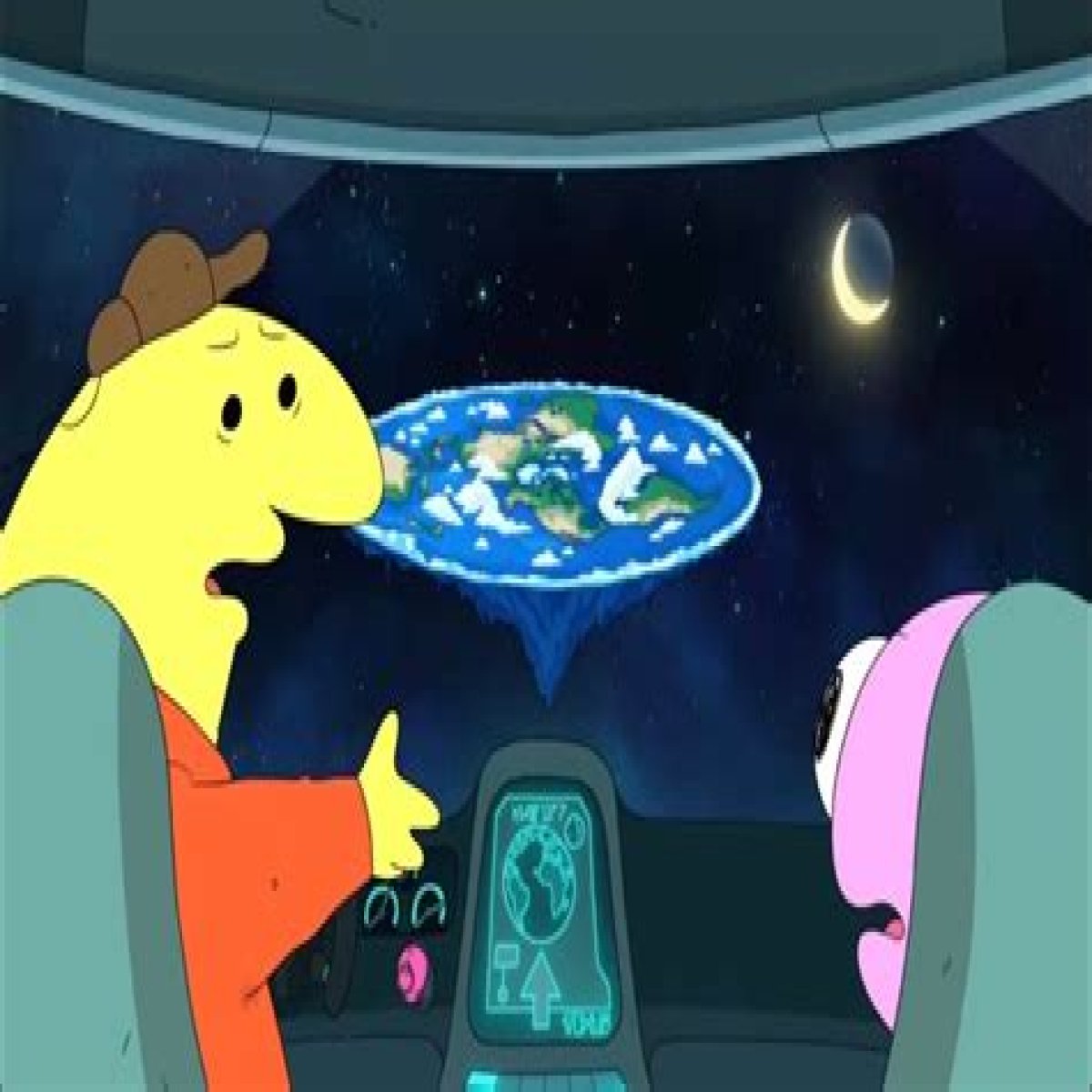In a world where humor meets conspiracy, the animated series "Smiling Friends" has carved out a niche that resonates with fans of both the absurd and the thought-provoking. The show, created by Zach Hadel and Michael Cusack, follows the adventures of two employees at a company that specializes in making people smile. However, amidst the laughter and antics, a curious phenomenon has emerged: the intersection of "Smiling Friends" and the flat earth theory. This article delves into the quirky blend of comedy and controversial beliefs, exploring how these seemingly disparate elements come together in the world of animation.
As "Smiling Friends" captures the essence of contemporary humor with its offbeat characters and surreal situations, the flat earth theory provides a stark contrast with its serious implications. The show often parodies various facets of society, and the flat earth theory is no exception. Fans have begun to draw connections between the show's themes and the underlying motivations of those who subscribe to alternative worldviews. This article seeks to illuminate the fascinating dynamics between "Smiling Friends" and the flat earth theory, revealing how humor can be a lens through which we view complex philosophical debates.
The juxtaposition of laughter and a belief system that challenges established scientific consensus invites viewers to ponder the nature of truth and perception. What does it mean to smile in the face of contradictory evidence? Can laughter coexist with serious ideology? Through the lens of "Smiling Friends" and the flat earth theory, we embark on an exploration of these questions, uncovering the deeper meanings hidden within the humor.
- What is the Background of "Smiling Friends"?
- Who are the Creators of "Smiling Friends"?
- How Does "Smiling Friends" Relate to the Flat Earth Theory?
- Why Do Fans Link "Smiling Friends" to the Flat Earth Theory?
- Can Humor Help in Understanding Beliefs?
- How Do People React to Humor About the Flat Earth Theory?
- Conclusion: The Impact of "Smiling Friends" on Cultural Discourse
What is the Background of "Smiling Friends"?
"Smiling Friends" is an animated television series that premiered on Adult Swim in 2020. The show follows the antics of two friends, Pim and Charlie, who work at a company dedicated to bringing joy to their clients. The series is characterized by its unique animation style, quirky humor, and satirical take on modern life.
Who are the Creators of "Smiling Friends"?
The series was created by Zach Hadel and Michael Cusack, both talented animators and writers. Hadel is known for his work on various internet animations, while Cusack has gained recognition for his contributions to the Australian animation scene. Their collaboration has resulted in a show that captures the absurdity of life while also commenting on deeper societal issues.
What Makes "Smiling Friends" Unique?
- Distinct Animation Style: The show features a hand-drawn aesthetic that sets it apart from other animated series.
- Humor with Depth: The humor often explores existential themes, making viewers laugh while prompting deeper reflection.
- Relatable Characters: Each character embodies different aspects of human experience, allowing for a diverse range of storytelling.
How Does "Smiling Friends" Relate to the Flat Earth Theory?
The flat earth theory posits that the earth is not a sphere but rather a flat disk. This belief has gained traction among certain groups, often as a response to perceived distrust of scientific institutions. While "Smiling Friends" primarily focuses on humor, it has inadvertently sparked conversations about this controversial theory.
Why Do Fans Link "Smiling Friends" to the Flat Earth Theory?
Fans have noted that the surreal and often nonsensical situations in "Smiling Friends" mirror the absurdity of some arguments made by flat earth proponents. The show's humor can be seen as a reflection of how people navigate complex issues in a world filled with conflicting information.
What Are the Implications of This Connection?
The connection between "Smiling Friends" and the flat earth theory invites viewers to examine how humor can serve as a coping mechanism for confronting uncomfortable truths. By laughing at the absurd, audiences may find a sense of relief while also grappling with deeper philosophical questions.
Can Humor Help in Understanding Beliefs?
Humor has long been a tool for exploring difficult subjects. In the case of "Smiling Friends" and the flat earth theory, humor can facilitate discussions about belief systems and perceptions of reality.
How Do People React to Humor About the Flat Earth Theory?
Humor surrounding the flat earth theory can evoke a range of reactions from audiences. Some may find it amusing, while others may feel it trivializes serious discussions about science and belief. This divergence in reactions highlights the complex nature of humor as a means of communication.
What Can We Learn from "Smiling Friends" and the Flat Earth Theory?
- Critical Thinking: The intersection of humor and belief encourages viewers to think critically about the information they consume.
- Empathy: Understanding the motivations behind different beliefs can foster empathy and open dialogue.
- Exploration of Truth: The show prompts viewers to question what they consider to be true and why.
Conclusion: The Impact of "Smiling Friends" on Cultural Discourse
In conclusion, "Smiling Friends" serves as a fascinating lens through which to explore the flat earth theory and the nature of belief. By blending humor with philosophical inquiry, the show invites viewers to engage with complex ideas while finding joy in the absurdity of life. As we navigate a world filled with competing narratives, the intersection of humor and belief reminds us that laughter can be a powerful tool for understanding ourselves and the world around us.
Embracing The Radiance Of Sunsugarshine: A Journey To The Heart Of Nature’s GlowDiscovering Bonanza Services USA: A Pathway To Exceptional SupportDiscovering The Fascination Behind Charli D'Amelio's Feet
